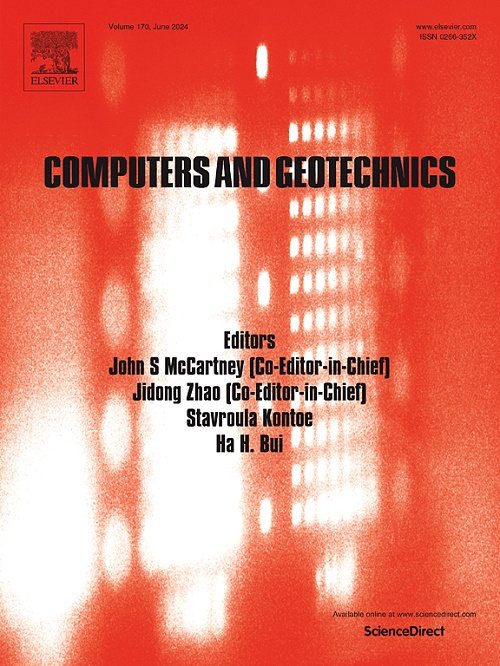Seepage features and reliability analysis of deep overburden dam foundations considering the spatial variability in permeability
IF 5.3
1区 工程技术
Q1 COMPUTER SCIENCE, INTERDISCIPLINARY APPLICATIONS
引用次数: 0
Abstract
Seepage stability is an important issue for dams constructed on overburden layers. However, less interest has been focused on the influence of the spatial variability of the overburden layers of dam foundations on seepage features and stability. These layers are too deep such that the cut-off walls cannot reach the rock base because of the limitations of the technology. We propose an efficient way to evaluate the effect of spatial variability on seepage features for different lengths of the cut-off walls, and we perform reliability analysis. By combining the Cholesky decomposition method with a single exponential autocorrelation function (SNX), we generate many random fields for probability analysis. We study the influence of spatial variability and the autocorrelation coefficient of hydraulic conductivity, together with different cut-off wall lengths and drainage prism configurations, on the typical maximum hydraulic gradient (it at the base of the cut-off wall and is at the downstream overburden) and downstream seepage flow (Qe). The results show that the deterministic seepage calculation underestimate the critical hydraulic gradient, because soil material heterogeneity often makes the seepage channel more focused. The existence of a drainage prism enlarges the critical maximum hydraulic gradient at the bottom of the cut-off wall. A low risk of seepage failure is shown only at the deep cut-off wall configuration but is also greatly affected by spatial variability. This work improves the understanding of how spatial variability influences the seepage reliability of overburden dams and is critical for controlling the seepage safety of dams with cut-off walls built upon deep overburden foundations.
求助全文
约1分钟内获得全文
求助全文
来源期刊

Computers and Geotechnics
地学-地球科学综合
CiteScore
9.10
自引率
15.10%
发文量
438
审稿时长
45 days
期刊介绍:
The use of computers is firmly established in geotechnical engineering and continues to grow rapidly in both engineering practice and academe. The development of advanced numerical techniques and constitutive modeling, in conjunction with rapid developments in computer hardware, enables problems to be tackled that were unthinkable even a few years ago. Computers and Geotechnics provides an up-to-date reference for engineers and researchers engaged in computer aided analysis and research in geotechnical engineering. The journal is intended for an expeditious dissemination of advanced computer applications across a broad range of geotechnical topics. Contributions on advances in numerical algorithms, computer implementation of new constitutive models and probabilistic methods are especially encouraged.
 求助内容:
求助内容: 应助结果提醒方式:
应助结果提醒方式:


